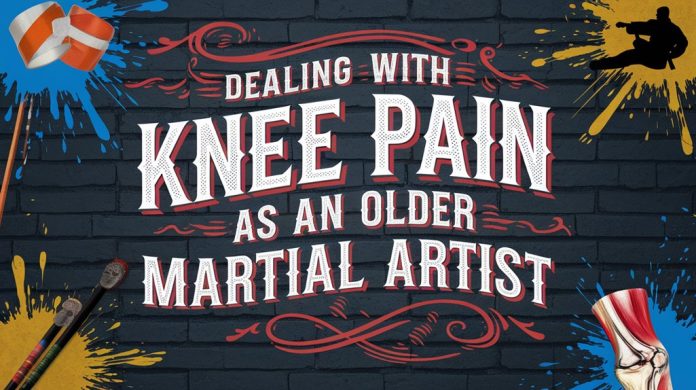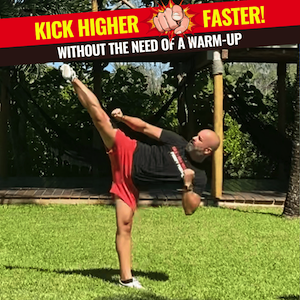As an older martial artist, you might find knee pain becoming a frequent companion in your practice. It's essential to understand the underlying causes and symptoms of this discomfort. By making a few adjustments to your routine, you can continue to train effectively while minimizing strain on your knees. Let's explore some strategies that can help you manage this issue more effectively and keep you engaged in your martial arts journey.
Understanding the Causes of Knee Pain in Martial Artists

When you train in martial arts, it's crucial to understand the various factors that can lead to knee pain. Poor technique is a major culprit; improper stances or movements can place undue stress on your knees. Moreover, overtraining without adequate rest can exacerbate existing issues, leading to inflammation and discomfort. You might also experience knee pain due to inadequate warm-ups or stretching, which can leave your muscles and ligaments unprepared for intense activity. Another factor is the surface you train on; hard or uneven surfaces can increase the risk of injury. Finally, previous injuries can create weaknesses that affect your knee's stability. Being aware of these causes can help you take proactive steps to protect your knees during training.
Common Symptoms and When to Seek Help
Knee pain can manifest in various ways, making it essential for martial artists to recognize the symptoms early. You might experience sharp pain during specific movements, a dull ache that lingers, or swelling around the knee joint. Stiffness, especially after sitting for long periods, and a popping or cracking sound when you move are also common indicators. If you're noticing these symptoms, pay attention to how they affect your training and daily activities. It's vital to seek help if the pain persists for more than a few days, worsens with activity, or is accompanied by significant swelling or instability in the knee. Ignoring these signs can lead to more serious injuries down the line, so don't hesitate to consult a healthcare professional.
The Importance of Proper Warm-Up and Stretching
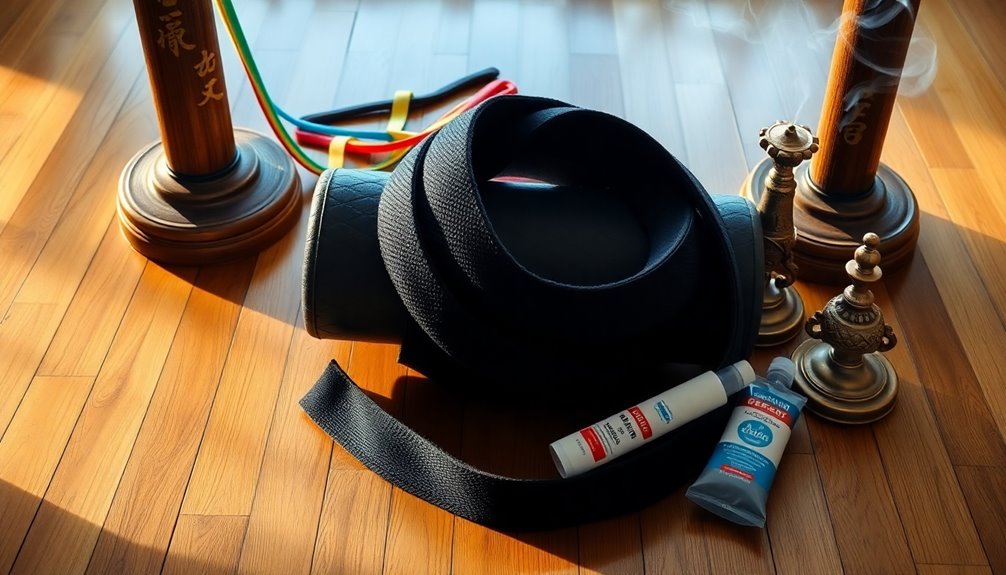
Recognizing the symptoms of knee pain is just the first step in preventing further injury. You need to prioritize a proper warm-up and stretching routine before each training session. This preparation increases blood flow to your muscles and joints, reducing the risk of strains or tears. Start with light cardio to elevate your heart rate, then incorporate dynamic stretches that focus on your legs, hips, and core. These movements should mimic the actions you'll perform in martial arts, ensuring your body is ready for the demands ahead. After your workout, don't skip static stretching to improve flexibility and promote recovery. By committing to these practices, you'll help protect your knees and enhance your overall performance in martial arts.
Strengthening Exercises for Knee Support
To effectively support your knees, incorporating strengthening exercises into your routine is vital. Focus on exercises that target the muscles around your knees, such as squats, lunges, and leg presses. These movements build strength in your quadriceps, hamstrings, and calves, which helps stabilize your knee joint. You might also include wall sits and step-ups for added resistance. Aim for two to three sessions per week, performing each exercise for 10-15 repetitions. Don't forget to engage in balance exercises, like single-leg stands, to enhance stability. Remember to start with lighter weights and gradually increase as you gain strength. Consistency is key, so make these exercises a regular part of your training to guarantee lasting knee support.
Modifications for Training Techniques
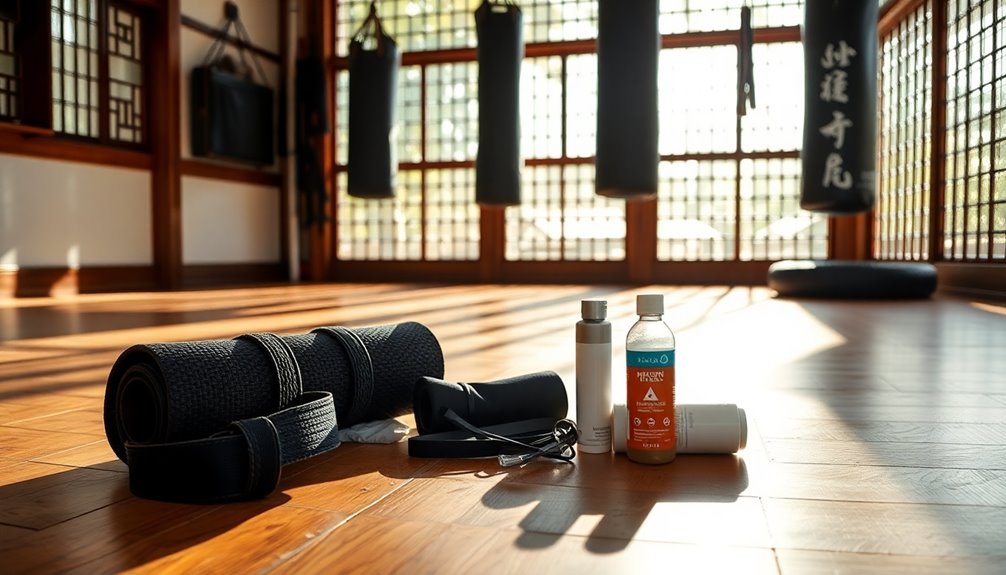
While training techniques are essential for martial artists, adjusting them to accommodate knee pain is equally important for staying injury-free. Start by modifying stances; consider a wider base to distribute weight more evenly, which can reduce strain on your knees. You might also limit deep bends in techniques like squats or lunges. When executing kicks, focus on height and control rather than power, and consider using low-impact alternatives, such as front kicks instead of roundhouse kicks. Incorporate more upper body techniques, allowing your legs to rest while still engaging in training. Finally, always listen to your body; if something doesn't feel right, don't hesitate to adjust or skip it. These modifications can help you train smarter and longer.
The Role of Nutrition and Hydration in Joint Health
Nutrition and hydration play an essential role in maintaining joint health, especially for martial artists who put their bodies through intense training. You need to focus on a balanced diet rich in anti-inflammatory foods like leafy greens, nuts, and fatty fish. These foods can help reduce inflammation and support cartilage repair. Furthermore, staying hydrated is vital; water helps lubricate your joints and maintains their flexibility. Aim for at least eight glasses a day, adjusting based on your activity level. Incorporating supplements like glucosamine or omega-3 fatty acids can also be beneficial. Remember, what you put into your body directly impacts how well you recover and perform, so prioritize nutrition and hydration to keep your joints healthy and functioning at their best.
Mindfulness and Mental Strategies for Pain Management
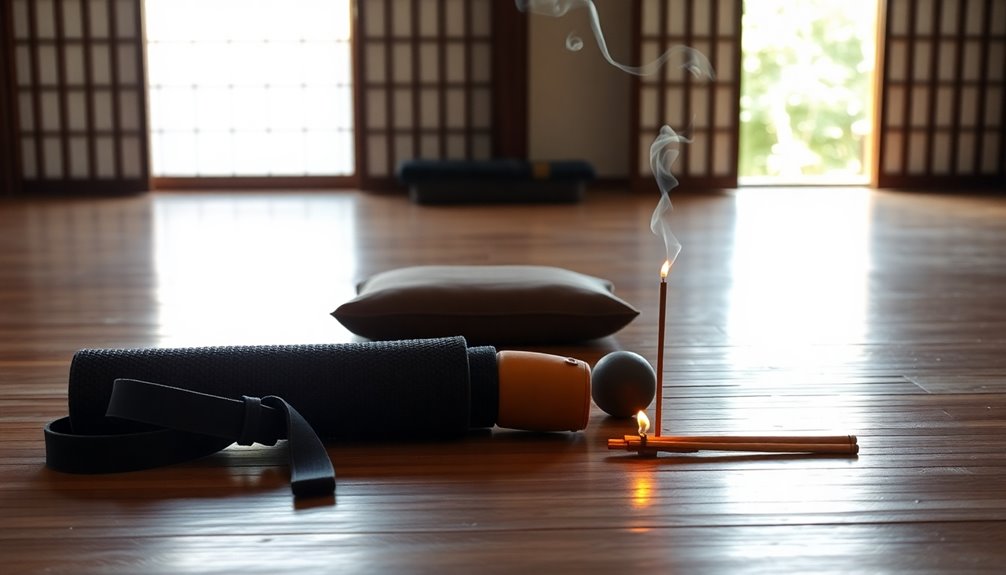
As you navigate the challenges of knee pain, incorporating mindfulness and mental strategies can greatly enhance your pain management. Start by practicing deep breathing techniques to help calm your mind and reduce stress. When discomfort arises, try to observe it without judgment. Acknowledge the pain, but remind yourself it doesn't define your experience. Visualization can also be powerful; imagine your knee moving freely and comfortably during training. Focus on positive affirmations to build resilience, reinforcing your strength and capability as a martial artist. Ultimately, consider meditation to foster a greater awareness of your body and its signals, allowing you to respond more mindfully to pain. These strategies can empower you, transforming your relationship with discomfort into one of acceptance and understanding.
In Summary
In your journey as a martial artist, it's essential to take knee pain seriously. By understanding its causes, prioritizing warm-ups, and incorporating strength exercises, you can keep your practice alive and kicking. Remember, it's not just about pushing through the pain; sometimes, you've got to take a step back to move forward. Embrace modifications and focus on nutrition to support your joints. With the right approach, you can continue to enjoy martial arts well into your golden years.


